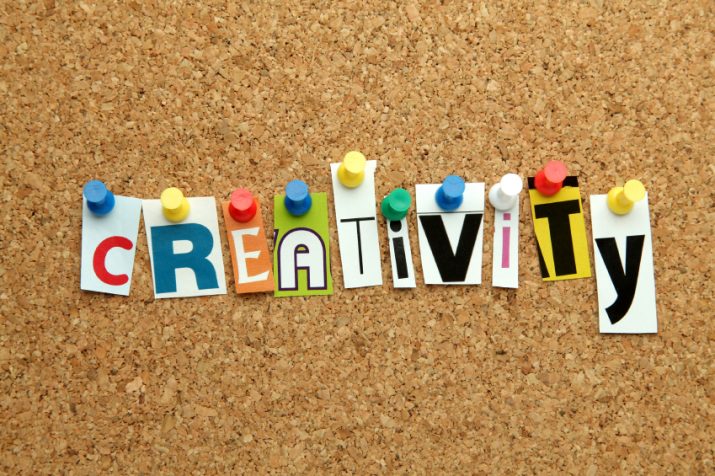7 Simple Techniques to Activate Your Creativity
By Antonio Tooley
October 9, 2015 • Fact checked by Dumb Little Man

Are you expected to deliver creative work on a daily basis? Sometimes the flow of ideas comes naturally, but there are also times when you cannot awaken this state of mind no matter how hard you try. It’s like you have a creative capacity – when you use the ‘allowance’, your brain goes blank and it refuses to collaborate. Don’t be devastated; you can find a way to get out of that state.

Jonah Kehrer, the author of Imagine: How Creativity Works, revealed an important detail: a man’s imagination is harmonious with other kinds of cognition; it does not work separately. The creative function of the brain is dependent upon its ability to approach an issue from a different viewpoint by combining information, insights, and perspectives that are already available.
The good news is that you can improve every function of your brain through diligent practice. The following 7 techniques work really well; you just need to experiment and find the one that fits your style.
1. Place yourself in creativity-friendly surroundings
You can’t expect to do your best room in a messy room. You’re spending valuable time trying to find the exact piece of paper you need, since the desk is full of lunch leftovers, coffee cups and documents. Before you can create an order in your thoughts, you need to set some order around you. The work environment affects the way you think and work.
When you realize that you’re not in shape, start by personalizing your environment. Clean up the desk, and you’ll immediately shift to creative mode. You should also change locations; that will enable your mind to respond differently. Take long walks or have a vacation!
2. The first solution might not be the best one. Think more!
Think Better: An Innovator’s Guide to Productive Thinking is a book that you should definitely read. The author, Tim Hurson, explains why it’s always good to aim for quantity of ideas during the brainstorming process. When you start getting ideas, you shouldn’t allow your mind to stop thriving on them.
According to Hurson’s concept, you should set a goal to come up with as many ideas as possible. For example, let’s say your goal is 90. When you analyze the list after the brainstorming session, you’ll notice that the first 30 ideas (the first third) are obvious. Your brain started getting into creative mode during the second third of ideas, so they have something more to offer. Finally, once you have gotten out of the zones of mediocrity, you started thinking of the most innovative solutions.
Thus, the recommendation is to think of as many ideas as possible, so you can get the most unexpected, unusual ‘third third’.
3. Ask all the right questions!
Reframing the problem is one of the most effective approaches towards awakening the creative state of mind. When you don’t have a definite solution, you need to ask all kinds of questions that will lead you in different directions.
For example, let’s try to find a solution for someone who cannot complete a PhD dissertation. He starts asking himself: “What do I need to do to get this done? How can I do more work in less time? What if I can’t write it? Can I get help? Should I hire a writer from a professional dissertation service? That’s it!” All questions can lead to unexpected answers that could be the potential solution of the problem.
4. Practice!
Yes; creativity can and should be practiced! This state of mind may hit you naturally from time to time, but there is no success without risks and failures. You need to get as many ideas as possible, analyze them and experiment with them! If you want to do something that hasn’t been done before, you can’t play it safe.
Don’t be disappointed if you notice that most of your ideas are not that great. If you’re not dismissing enough, it means you didn’t try to get plenty of them.
5. Stay conscious!
You cannot shut your reason down when you’re thinking of new concepts. You need tons of information that’s already available in your mind. Observe and examine your base of knowledge and pay attention to all details.
Analyze your ideas and think how they would develop if you made the first steps towards realization. Don’t leave things to chance! Even the ideas that seem useless at first can take you in the right direction. During the brainstorming process, you’ll get thoughts that don’t seem relevant to the goal you set. Write them down! Then, take a look at the list and try to connect the different thoughts into a single concept. You might come up with unexpected combinations, analogies and metaphors.
6. Connect the dots!
Your ideas seem too similar to something that’s already available? That’s quite possible. You can hardly think of a completely unique idea. The key to creativity is in connecting the dots – you can use other people’s contributions and combine them into a creative pattern. Then, you’ll be on your way to developing an entirely new idea.
Steve Jobs found the right words to describe this concept: “Creativity is just connecting things. When you ask creative people how they did something, they feel a little guilty because they didn’t really do it, they just saw something. It seemed obvious to them after a while. That’s because they were able to connect experiences they’ve had and synthesize new things.”
7. You need constraints!
Do not use every single tool and resource you run into. For example, let’s say you’re trying to get a new business idea and you start experimenting with all creativity-awakening methods you discover. The creative flow may be messy, but that doesn’t mean you should add even more confusion. Sometimes, simplicity is the best solution.
Plan the process, take only the tools you need, and don’t complicate things too much. Creativity does not need an abundance of resources. When you ditch the tablet, smartphone, apps, and perfect writing software, you might discover that your mind is inspired to think more and think better.
Antonio Tooley
Antonio is a New Jersey-based hopeless optimist who enjoys basking in the world's brightest colors. He loves biking and he is a writer at EduGeeksClub


